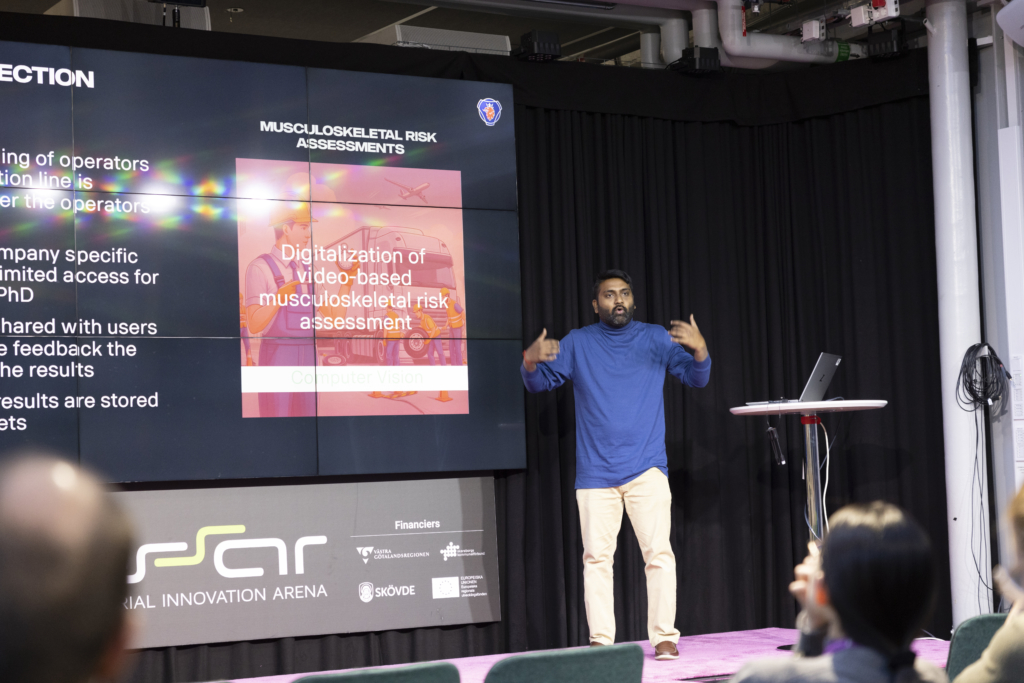He wants to equip ergonomists with better tools

Did you know that 60 percent of health problems at work come from issues with muscles and bones? Veeresh Elango aims to address this and equip ergonomists with better tools. He is a senior data scientist at Scania and a new doctoral student at the Smart Industry Sweden research school.
Over the last five years with Scania, his focus has been on delivering data-driven solutions to both comprehend and enhance various processes, playing a pivotal role in steering the organisation towards a more data-centric approach.
In his current capacity, he tackles a spectrum of questions, from unravelling the intricacies of data phenomena to developing advanced AI Chatbots using LLM to interact with, bots that can guide users through complex guidelines. His research tackles workplace health problems related to muscles and bones.
Advanced methods to plan workspaces
“Think of it like trying to prevent back or joint pain that many people experience at work. I use advanced methods like teaching computers to learn and make decisions on their own, to plan workspaces in a way that reduces the risk of these health problems right from the start,” says Veeresh Elango.
Additionally, he employs computer vision, which gives computers the ability to ‘see,’ to quickly and effectively identify potentially harmful body positions during health risk assessments. In a nutshell, he is working on making workplaces safer and healthier by using artificial intelligence technology.
A significant portion of health problems at work, around 60 percent, comes from issues with muscles and bones. These problems, called musculoskeletal disorders, can lead to pain, disability, and economic losses for both workers and employers.
“My research is all about making workplaces healthier and more productive. By focusing on preventing and identifying these issues, I aim to improve the well-being of individuals,” says Veeresh Elango.
Contributing to a harmonious and productive workplace
This research directly aligns with the United Nations’ goal of ‘Good health and well-being,’ emphasizing the importance of creating healthier environments for everyone. The outcomes hold significant potential for advancing workplace design and musculoskeletal health practices.
“Layout planners can leverage the findings to strategically choose layouts that not only prioritise the overall performance of the system but also optimise human well-being”.
The purpose is to create work environments that foster employee health and operational efficiency, contributing to a harmonious and productive workplace.
Simultaneously, ergonomists stand to benefit by incorporating the research results into their practices.
“The goal is to revolutionise musculoskeletal risk assessment, shifting towards a digitalised and efficient approach. By doing so, the aim is to empower ergonomists to proactively identify and address potential health risks, ultimately enhancing the overall well-being of workers,” says Veeresh Elango.